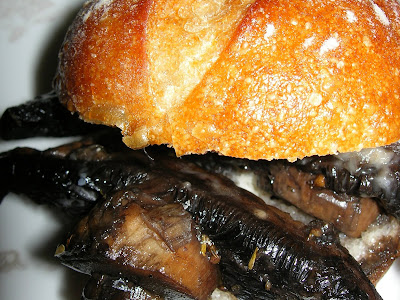Whilst I hold no illusions (nor delusions) that Project Editor and blogger (elegant sufficiency) Stephanie Wood intended this as a tribute to me, I thought it cute owing to my (currently neglected) blog's title, get real! addressing many of my concerns when I started avm about the food we eat. Whilst some of this is slowly transferring into the avm site, if you're interested at my rants you can look at them here.
More importantly however, the booklet is an important acknowledgment of a trend occurring across the world, although Australians have been slow on the uptake - a possible complacency owing to our rich agricultural history. That trend is about getting back to basics with how we feed ourselves - sourcing and eating fresh foods - unprocessed, unadulterated. The proliferation of farmers' markets, chefs increasingly becoming involved in the cultivation of produce, the slow food movement, seed savers, perma-culture and balcony gardening, and concepts such as ethicurean, organic and SOLE are all a part of this change.
And this is exactly what I, and animal vegetable mineral as its vehicle, am on about!
The business models of our two national supermarket chains are unsustainable. The "fresh food people" aren't and quite frankly, "getting better every day" isn't good enough! Not everyone can or has the inclination to rear inner city chooks, grow a box of fruit and veg on their balcony and eat pork from Uncle Jim's farm, but what we can do, is pool our collective spend and eat great, fresh produce with flavour and variety affordably. And this is what animal vegetable mineraldoes.
The great thing is, that becoming an informed consumer and making sustainable choices doesn't have to come with the discomfort of hessian sack underwear! It can be enjoyable as long as we approach it that way. And that's what I'm trying to do - with great produce, tips and hints, meal makers and little helpers along the way.
"Skye Gyngell says it's hard to cook badly when you use good produce."
Once you hook in to a supply of good meat, veg, seafood, fruit, breads, poultry you realise how little you need to do with it - it taste's great on its own! Not to mention the health benefits of eating this way - since I began the business in concept I have barely had a sniffle - I haven't even been visited by my annual winter bronchial cough! And this is coming from someone that ate pretty well (as long as we were organised) in the first place.
So there you have it - by shopping with avm you're a trend setter, and you didn't even know it! Furthermore, it's come at an everyday price and you're benefiting from it. Now is the time to share the love. Whether it's healthy food, tasty food or just plain old convenience you and your friends are after, spread the word... we can't all do it on our own, but we can change the way we live if we so chose.
Happy eating,


























